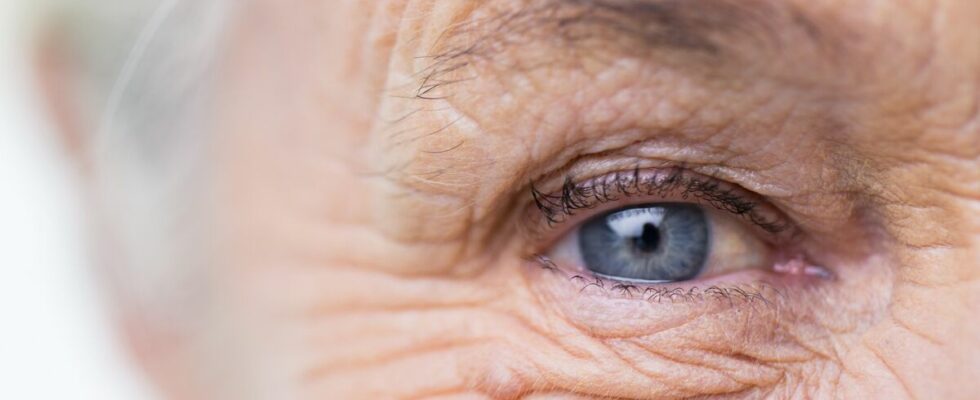AMD, age-related macular degeneration, is a chronic disease that affects people over the age of 50, in whom it is the leading cause of visual disability. It is characterized by damage to the macula, the central area of the retina, and causes a progressive decline in central vision. Age is obviously the main risk factor. According to the figures of Inserm, AMD affects approximately 10% of 65-75 year olds and 25 to 30% of those over 75. Even before symptoms appear, the ophthalmologist can observe yellowish deposits called drusen in the back of the eye. Clearly visible on examination, these small yellow dots are more or less located on the macula and mark the first stage of AMD.
Dry AMD: progressive degeneration
Dry AMD, also called atrophic, is a slowly progressive disease characterized by a progressive disappearance of retinal pigment epithelium (RPE) cells and photoreceptors located in the macula. The retina gradually atrophies and degenerates. The loss of central vision is progressive, peripheral vision is not affected, and the person can continue to live normally for several years, although they may have difficulty seeing details.
Wet AMD, a form that progresses very quickly
The process at work in wet, or exudative, AMD is very different. This disease is caused, not by a progressive loss of cells in the macula, but by the presence of abnormal vessels under the retina which will cause hemorrhages and edema in the macula. Loss of central vision can then be extremely rapid and occur within a few days or weeks if left untreated. However, certain signs can alert and should lead to urgent consultation: a reduction in central visual acuity, the appearance of a central dark spot (scotoma) in the field of vision, undulation of straight lines, distortion of images . In some cases, patients may also have altered contract and color vision and difficulty reading despite wearing appropriate glasses.
Dry AMD: there is no treatment
The other major difference between the two forms of AMD is the treatment that can be offered to patients. In the case of dry AMD, there is no treatment to cure it or slow its progression. Wet AMD, on the other hand, can be treated with anti-VEGF drugs, designed to block the action of a molecule called VEGF. The latter is a growth factor of these abnormal vessels under the retina. The drug is administered via intravitreal injections carried out after instillation of anesthetic drops. This treatment helps slow the progression of the disease and promote recovery of visual acuity.
Sources:
- Age-related macular degeneration (AMD) – Inserm INSERM
- Understanding Age-Related Macular Degeneration (AMD) – Health Insurance
- Intravitreal injection: cutting edge to combat age-related macular degeneration – Poitiers University Hospital
Read also :
⋙ Cataract: what are the risk factors and can it be prevented?
⋙ AMD: what diet should you choose to prevent it?
⋙ Cataract, glaucoma, AMD… How to get screened quickly?
